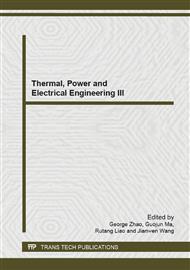p.1554
p.1562
p.1567
p.1575
p.1582
p.1588
p.1592
p.1597
p.1602
The Relationship among the Security, Efficiency and Adequacy of Electrical Power Grid Based on the Novel Evaluation Method
Abstract:
In order to study out the incidence relationship among security, efficiency and adequacy of Electrical Power Grid, a novel analyze model considering grid evolution and a relationship evaluation method is proposed in this paper. The model incorporates in fast dynamic and slow evolution. The former is based on an improved OPA model with low frequency load shedding control and the outage risk calculation. The latter is consists of increasing load, up-grading and constructing equipments including power plants, transformers and transmission lines, Using the model simulation the power grid development process. Based on the model, the customer outage risk caused by cascading failure is obtained in several times, the efficiency index and grid scale index are solved at the same times, these data are the basic data for analyze the incidence relationship among the security, efficiency and adequacy of electrical power grid. In this paper, the power grid of Kaifeng City in Henan Province, of China is used to simulate the evolution. The results show that the relationship among the security, efficiency and adequacy of grid is as exponential function, and a reasonable range of efficiency and adequacy of grid are proposed.
Info:
Periodical:
Pages:
1582-1587
Citation:
Online since:
June 2014
Authors:
Price:
Сopyright:
© 2014 Trans Tech Publications Ltd. All Rights Reserved
Share:
Citation:


